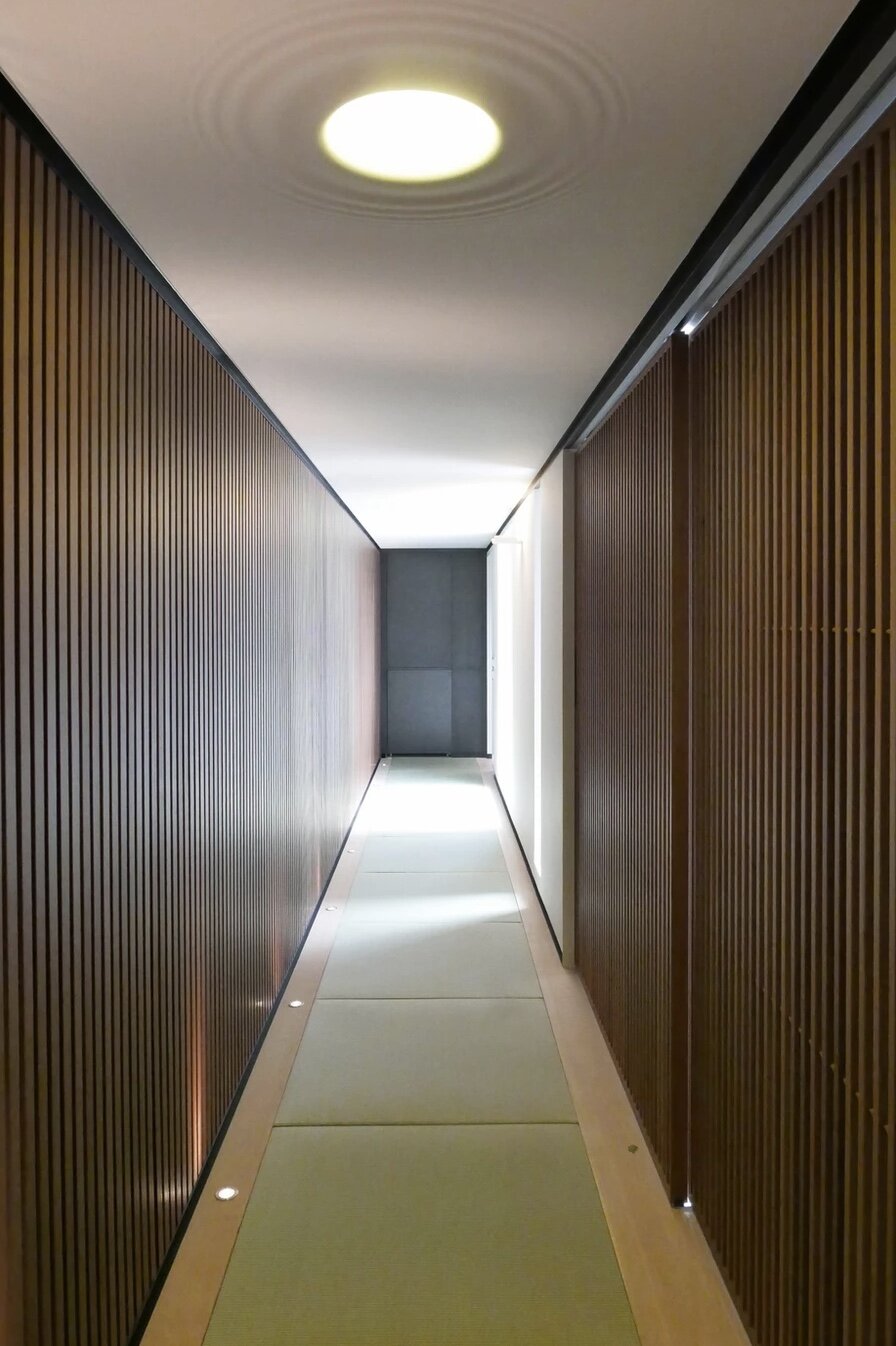TATAMI
We are sourcing premium quality tatami directly from a wonderful craftsman’s workshop in Kyoto, Japan. Please inquire about customization and many different application possibilities in Japanese restaurants, private homes, design projects.
There is nothing like walking or sleeping on tatami.
We can assist you in bringing to your space an element of authentic Japan.
MORE INFO
BASE
There are three main types of tatami base, these are natural, board, foam and board base amd base for floor heating. The selection depends on the project.
The natural base key features are superior control of humidity, fireproof, thermal insulation, & durability.
The thickness of the tatami depends on the project, it is really up to the design. Tatami is traditionally between 45-55mm. It can be as low as 15mm, or even made as a simple cover without a base, this is called uwashiki.
OMOTE / COVER
The cover is traditionally made from a reed called Juncus effusus (or other types of Juncus), washi paper, or a plastic blend.
Mold occurs if the tatami has no ventilation or has an object like a mattress placed directly fabric to tatami. Mold is easily prevented by keeping the tatami clean and ventilated.
Japan adheres to very strict regulations in the growing, production and manufacture of the omote. This is evident in the quality of the price but also is representative in the color. While there are cheaper products these can’t age as Japanese tatami does, and presents uneven color, as well uneven lengths of reed which really impact the longevity of the product.
HERI
The fabric edge of the tatami is called heri, this finishes the mats traditionally. Tatami can be made without heri.
Our suppliers can source and present non-traditional alternative edges to match your project.
PESTS/MOLD
Tatami normally doesn’t suffer from pests but the event it does a simple insecticide will remove the problem.The natural base has the greatest chance but if cared for correctly this is rare.
There are additional preventive measures for those concerned. Please enquire.
Mold occurs if the tatami has no ventilation or has an object like a mattress placed directly to tatami. Mold is easily prevented by keeping the tatami clean and ventilated.
CLEANING
Generally spills on tatami are easy to remove. You may use a soft damp towel wiping with the grain never against it. If a spill of red wine is taken care of immediately it shouldn’t stain.
DO NOT use chemicals on the tatami, if necessary use a very diluted dish soap. Water is recommended to not affect to the color. Vacuuming is 100% OK.
INDOOR ENVIRONMENTAL QUALITY (IEQ)
Several points that make tatami an excellent choice for those concerned about their environmental indoor quality.
1. Tatami is hypoallergenic.
2. Natural tatami acts as an air purifier. It absorbs carbon monoxide & acts as a temperature regulator, absorbing moisture and releasing it for the dryer months.
3. For a families tatami offers a great option for babies and small children with its air purifying qualities, hypoallergenic materials, slight cushion effect for little ones.
4. The mats also act as insulation both for temperature and sound.
NATURAL BASE
Made of compressed straw. This is the base used for the top quality handmade and machine made tatami.
Characteristics: air quality, cushioning under foot, humidifier and dehumidifier.
BOARD BASE
Made of compressed wood chips. This is the base used for machine made tatami. It is suitable to lay on concrete. For floor heating there is a fiberglass base option, please enquire.
Characteristics: strength and versatility.
FOAM BASE
Made of compressed wood chips with a foam core. This is the base used for machine made tatami. It is suitable to lay on concrete. For floor heating there is a fiberglass base option, please enquire.
Characteristics: feels similar to natural tatami underfoot.
TOP COVER
Omote comes is a variety of different weaves, colors and materials. Most common and traditional is natural. Our tatami suppliers specialize in dyed natural tatami unavailable normally.
OMOTE
Omote made in Japan is premium, there are different grades. It is determined by the number of strands, also the type and number of internal strings. This image shows standard Japanese omote vs Chinese omote (cheapest option).
QUALITY
Lesser quality omote is shown on the right. This has a low number or internal strings made of cotton ad less strands per mat. The left image shows a top quality omote with four hemp strings per mount. This determines the strength and longevity.
PRICE
Kyoto Full Size (Premium): 0.955 m by 1.91 m @ 2,250 AED
Kyoto Half Size (Premium): 0.955 m by 0.955 m @ 1,300 AED
Price varies depending on several factors. Size, finish, base, customization & shipping.
Please get in touch and we’ll be happy to assist you.
BLACK & SILVER TATAMI
Prices start from 4,250 AED per mat (full Kyoto size) & 3,300 AED per mat for no edge half size.
FRAMING
Custom frames are available. Price varies in relation to size, material, and finishing.
SHIPPING
We use UPS or DHL and ship by air.
Tatami House
TEA HOUSE, MAJLIS OR BED WITH TATAMI BASE
Available with a metal and wooden frames.
Metal frame @ 18,500 AED*
Wooden frame @ 22,500 AED
*On display at our store in Alserkal Avenue















